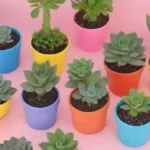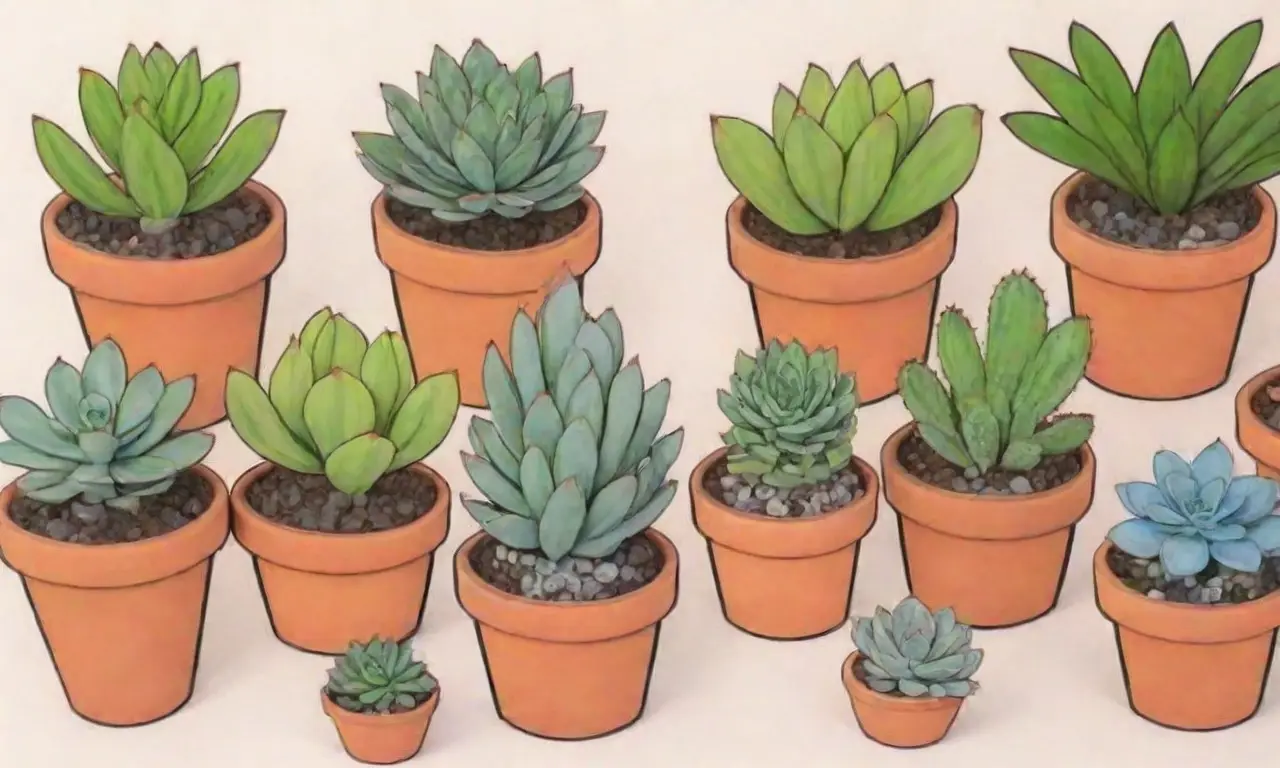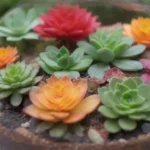
How to Host a Succulent Terrarium Workshop at Home

Introduction
In recent years, the art of gardening has taken on new life in the form of succulent terrariums. These creative ecosystems not only beautify our spaces but also offer a relaxing and fulfilling activity that anyone can enjoy. Whether you're a seasoned gardener or a complete novice, creating a succulent terrarium is an exciting project that combines nature, design, and a bit of science.
This article aims to provide you with a comprehensive guide on how to host a succulent terrarium workshop at home. We will cover everything from the materials you’ll need to the step-by-step process of creating your own little green oasis. This workshop can serve as the perfect opportunity for quality bonding time with friends and family or a creative outlet for individuals looking to unwind.
Understanding Succulent Terrariums
Succulent terrariums are self-contained miniature gardens that house various types of succulent plants. These plants are specifically adapted to thrive in arid environments, which means they're perfect for a terrarium setting since they require minimal water and are relatively low maintenance. The beauty of these terrariums lies not only in their aesthetic appeal but also in their ability to replicate the natural habitats of succulents.
Why Host a Workshop?
Hosting a workshop to create succulent terrariums has a plethora of benefits. For starters, it’s an excellent opportunity for social interaction. Whether you invite friends over or organize a community event, the workshop allows participants to share ideas, tips, and laughter. The hands-on experience of planting, arranging, and caring for succulents fosters a sense of camaraderie, making it a memorable event.
Moreover, hosting a workshop allows you to share your knowledge and passion for gardening. Many people feel intimidated by the idea of caring for plants, but with a little guidance, they can discover how fun and rewarding it can be. Teaching others also deepens your understanding and enhances your skills, making it a win-win situation for everyone involved.
What You Need to Know Before Hosting
Before diving into the specifics of hosting your succulent terrarium workshop, it's essential to lay a solid foundation of knowledge about the materials, plants, and techniques involved. Succulents, such as Echeveria, Haworthia, and Jade plants, are popular choices due to their vibrant colors and unique forms. Understanding their care requirements is also key, as each plant type has different light and water needs.
Additionally, consider the size of your group and the available resources. Will you provide all materials for each participant, or will they bring their own? Planning ahead will ensure a smooth workshop experience. Make an equipment checklist to confirm nothing is left behind, as being prepared shows consideration and professionalism.
 Bringing Life to Your Workspace: Succulent Terrariums Ideas
Bringing Life to Your Workspace: Succulent Terrariums IdeasPlanning Your Terrarium Workshop
Choosing a Suitable Venue
The first step in organizing a succulent terrarium workshop is to select a suitable venue. Hosting the workshop at home has its advantages, such as convenience and a comfortable atmosphere. However, ensure that there's ample space to accommodate all participants while allowing room to work comfortably with the materials. Good lighting is also crucial for facilitating this creative activity, as succulents thrive in bright spaces.
If your home is too small, consider hosting the workshop in a community center, park, or even a greenhouse if available. Local nurseries may sometimes offer space and materials in exchange for a small fee, which helps you minimize upfront costs.
Creating an Inviting Atmosphere
An inviting atmosphere encourages creativity and friendly interaction. Decorate the space with plants, flowers, and unfortunately overlooked aspects such as music or scents, which can enhance the experience. Consider playing soft instrumental tunes in the background—a soundscape that does not overwhelm conversations.
Arrange the tables and seating in a way that promotes interaction. A circular setup or smaller group clusters can foster engagement, allowing participants to share ideas and ask questions more freely. A well-thought-out arrangement ensures that everyone can see your demonstrations and interact with one another comfortably.
Materials and Supplies
Next, gather all the materials needed for the workshop. Each participant will require a glass container for their terrarium, substrate layers, and assorted supplies such as soil, rocks, charcoal, and, of course, a variety of succulents. Here’s a detailed list:
- Glass containers: Vases, wild-shaped terrariums, or jars depending on the design
- Succulent soil: A well-draining soil mix designed for succulents
- Decorative gravel: To create drainage and visual interest
- Activated charcoal: Helps filter the air and water, preventing odors
- Succulents: Select different varieties for a vibrant look
- Decorative elements: Mini statues, colored stones, or driftwood for personalization
- Tools: Small trowels, spray bottles for watering, and gloves to protect hands
Having all materials prepared beforehand will create a seamless experience and prevent disruption during the workshop.
Conducting the Workshop

 Creating a Closed Terrarium: The Science Behind Succulents
Creating a Closed Terrarium: The Science Behind SucculentsSetting Up the Workshop
On the day of the workshop, set up a designated area for each participant that includes all necessary materials and tools. Consider providing aprons for participants to protect their clothing from soil and water. You might also want to have a welcome sign, as it adds a lovely touch and creates a friendly atmosphere right from the start.
Take a moment before starting to welcome everyone and introduce yourself. A brief overview of the workshop's agenda helps set expectations and encourages participant engagement. Explain the importance of each material and the steps involved in creating a terrarium. Share personal stories or anecdotes to make your presentation relatable and to connect with your audience emotionally.
Step-by-Step Demonstration
During the workshop, guide participants through a step-by-step process of creating their succulent terrariums. Begin with layering the bottom of the containers with small rocks or stones for drainage—it is crucial for the health of the plants. Following this, sprinkle a layer of activated charcoal to keep the environment fresh and free from bacteria.
Then, add a layer of succulent soil and explain how to select the properly sized plants for their containers. Allow participants to choose their succulents, but also offer guidance on how the arrangement will affect the aesthetic and care of the terrarium. Encourage experimentation with colors, shapes, and textures, as terrariums should reflect personal style.
As each participant constructs their terrarium, circulate around the room to provide assistance, answer questions, and offer encouragement. This interaction not only reassures participants but also builds a sense of community, making the workshop more enjoyable for everyone.
Encouraging Creativity and Personalization
Once the terrariums are assembled, encourage participants to personalize their creations with decorative rocks, small statues, or figurines. Discuss the art of design, covering elements such as balance, color, and space. Remind them that each terrarium is a unique work of art, and there are no strict rules— it should reflect their personality and style.
In addition to aesthetics, take a moment to discuss the care of the terrariums. Offer tips on how to maintain the plants, including watering schedules, light requirements, and seasonal care. A well-informed participant will feel empowered and confident, enhancing their enthusiasm for plant care post-workshop.
 Seasonal Succulent Terrarium Ideas for Every Time of Year
Seasonal Succulent Terrarium Ideas for Every Time of YearConclusion
Hosting a succulent terrarium workshop at home is not only an enjoyable and creative endeavor, but it also brings friends, family, or community members together in a meaningful way. As we navigate through layers of instruction, encouragement, and community bonding, we create not just terrariums but lasting memories that participants will cherish.
By thoroughly preparing your materials, planning an inviting environment, and engaging your participants in a step-by-step process, you can transform a simple gardening activity into an unforgettable experience. With careful attention to detail and a welcoming atmosphere, you can ignite a passion for gardening in anyone, regardless of their experience level.
Finally, take the time after the workshop to connect with participants, perhaps by sharing photos of their terrariums online. Keeping the conversation alive encourages continued interest in gardening, and who knows—you may find an enthusiastic community of succulent lovers blossoming right in your own neighborhood!
If you want to read more articles similar to How to Host a Succulent Terrarium Workshop at Home, you can visit the Terrarium ideas category.



You Must Read